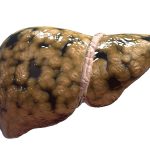By David Blyweiss, M.D., Advanced Natural Wellness
Over 100 years ago, William Howard Taft was the heaviest President to ever hold office in the U.S. Weighing in at more than 340 pounds he was what we call morbidly obese. At 275 pounds, Grover Cleveland was the second-heaviest President.
But it’s interesting to note that neither of these men developed adult-onset diabetes. In fact, most morbidly obese people back in those days never became diabetic.
The reason is oddly simple. Prior to the mid-1900s, people weren’t exposed to all of the toxins that are so prevalent in our society today. Many of these toxins are now being called diabetogens, because they have such a profound effect on blood sugar control.
One of the most pervasive group of chemicals today are per- and polyfluoroalkyl substances (PFAS). They are also known as “forever chemicals” because they don’t break down in the environment.
PFAs can be found in nonstick frying pans, waterproof clothing and stain repellants used on carpeting and fabric furnishings.
They are in food packaging, like microwave popcorn bags, where they can seep into the food you eat.
PFAs are also commonly found in cosmetics that women use every day.
As a matter of fact, when researchers at the University of Notre Dame tested 231 U.S. and Canadian cosmetic products, they found that nearly half of them contained PFAs. Some of the cosmetics tested included mascaras, lip products, foundations and concealers.
Because a lot of these items are used around the eyes and on the lips, the PFAs are easily absorbed by the body through the tear ducts and mucous membranes.
In the past, these chemicals have been linked to cancer, thyroid disease, immune suppression, low birth weight, and decreased fertility.
More recently, we’ve learned PFAs are also associated with the development of type 2 diabetes and non-alcoholic fatty liver disease (NAFLD).
Diabetes and NAFLD: Two Sides of the Same Coin.
In a new study, researchers followed a group 1237 women. At the beginning of the study the women were 45 to 56 years old and all of them were diabetes-free.
After 16 years of follow-up, they found that the women with the highest exposure to seven different types of PFAs were more than twice as likely to develop diabetes.
Just three months earlier, a different group of researchers released an analysis of 24 different studies showing that PFA exposure was associated with higher levels of ALT (alanine transaminase), AST (aspartate aminotransferase) and GGT (gamma-glutamyl transferase) in humans.
These are all liver enzymes that, at high levels, are indicative of NAFLD.
It appears that PFAs create an imbalance in both lipid and amino acid metabolism. This increases fatty acid oxidation which eventually leads to impaired glucose metabolism and insulin resistance. These same metabolic disruptions are also associated with liver damage and fatty liver.
Now here’s the real kicker…
Having an accumulation of fat in your liver cells increases your risk of developing type 2 diabetes. Fatty liver also increases diabetic complications. At the same time, having diabetes is one of the strongest risk factors for faster progression of NAFLD.
This is called a bidirectional relationship and it’s extremely common. About 70% of diabetic patients have fatty liver.
Let’s Get PFAs Out of Your Life
On June 15, 2022, the EPA issued a health advisory warning that PFAs are more dangerous than they previously thought. The advisory states that…
“Based on the new data and draft analyses, the levels at which negative health effects could occur are much lower than previously understood when EPA issued the 2016 Health Advisories for PFOA and PFOS (70 ppt) – including near zero for certain health effects.”
In other words, any amount of PFA exposure is bad for you. So one of the best things you can do is start limiting your exposure to them.
Get rid of non-stick pans. Toss out any personal hygiene products or cosmetics that contain the words ‘PTFE’ or ‘perfluoro’ in the list of ingredients. Avoid foods that come in grease-resistant packaging – the kind that resembles paper or cardboard. Choose fresh, organic foods instead.
I also recommend boosting levels of glutathione, your “master antioxidant.” It helps to protect against oxidative damage to your cells and metabolic pathways that lead to diabetes and liver damage.
Glutathione itself isn’t very well absorbed by the body. But your body can manufacture more glutathione on its own when you take N-acetylcysteine (NAC), alpha lipoic acid and vitamin C daily.
It’s never too late to make positive changes in your life. And the sooner you take steps to rid your body of PFAs, the better off you will be.
SOURCES:
Pizzorno J. Is the Diabetes Epidemic Primarily Due to Toxins?. Integr Med (Encinitas). 2016;15(4):8-17.
Whitehead HD, Venier M, Wu Y, Eastman E, Urbanik S, Diamond ML, Shalin A, et al. Fluorinated Compounds in North American Cosmetics. Environ Sci Technol Lett. 2021; 8(7): 538–544.
Susmann HP, Schaider LA, Rodgers KM, Rudel RA. Dietary Habits Related to Food Packaging and Population Exposure to PFASs. Environ Health Perspect. 2019 Oct;127(10):107003.
Meneguzzi A, Fava C, Castelli M, Minuz P. Exposure to Perfluoroalkyl Chemicals and Cardiovascular Disease: Experimental and Epidemiological Evidence. Front Endocrinol (Lausanne). 2021;12:706352.
Park SK, Wang X, Ding N, Karvonen-Gutierrez CA, Calafat AM, Herman WH, Mukherjee B, Harlow SD. Per- and polyfluoroalkyl substances and incident diabetes in midlife women: the Study of Women’s Health Across the Nation (SWAN). Diabetologia. 2022 Jul;65(7):1157-1168.
Costello E, Rock S, Stratakis N, Eckel SP, Walker DI, Valvi D, Cserbik D, Jenkins T, Xanthakos SA, Kohli R, Sisley S, Vasiliou V, La Merrill MA, Rosen H, Conti DV, McConnell R, Chatzi L. Exposure to per- and Polyfluoroalkyl Substances and Markers of Liver Injury: A Systematic Review and Meta-Analysis. Environ Health Perspect. 2022 Apr;130(4):46001.
Chen Z, Yang T, Walker DI, Thomas DC, Qiu C, Chatzi L, Alderete TL, Kim JS, et al. Dysregulated lipid and fatty acid metabolism link perfluoroalkyl substances exposure and impaired glucose metabolism in young adults. Environ Int. 2020 Dec;145:106091
Cardenas A, Hivert MF, Gold DR, Hauser R, Kleinman KP, Lin PD, Fleisch AF, Calafat AM, Ye X, Webster TF, Horton ES, Oken E. Associations of Perfluoroalkyl and Polyfluoroalkyl Substances with Incident Diabetes and Microvascular Disease. Diabetes Care. 2019 Sep;42(9):1824-1832.
Hasegawa T, Iino C, Endo T, et al. Changed Amino Acids in NAFLD and Liver Fibrosis: A Large Cross-Sectional Study without Influence of Insulin Resistance. Nutrients. 2020;12(5):1450.
Jin R, McConnell R, Catherine C, et al. Perfluoroalkyl substances and severity of nonalcoholic fatty liver in Children: An untargeted metabolomics approach. Environ Int. 2020;134:105220.
Targher, G., Corey, K.E., Byrne, C.D. et al. The complex link between NAFLD and type 2 diabetes mellitus — mechanisms and treatments. Nat Rev Gastroenterol Hepatol. 2021;18: 599–612. Dharmalingam M, Yamasandhi PG. Nonalcoholic Fatty Liver Disease and Type 2 Diabetes Mellitus. Indian J Endocrinol Metab. 2018;22(3):421-428.




